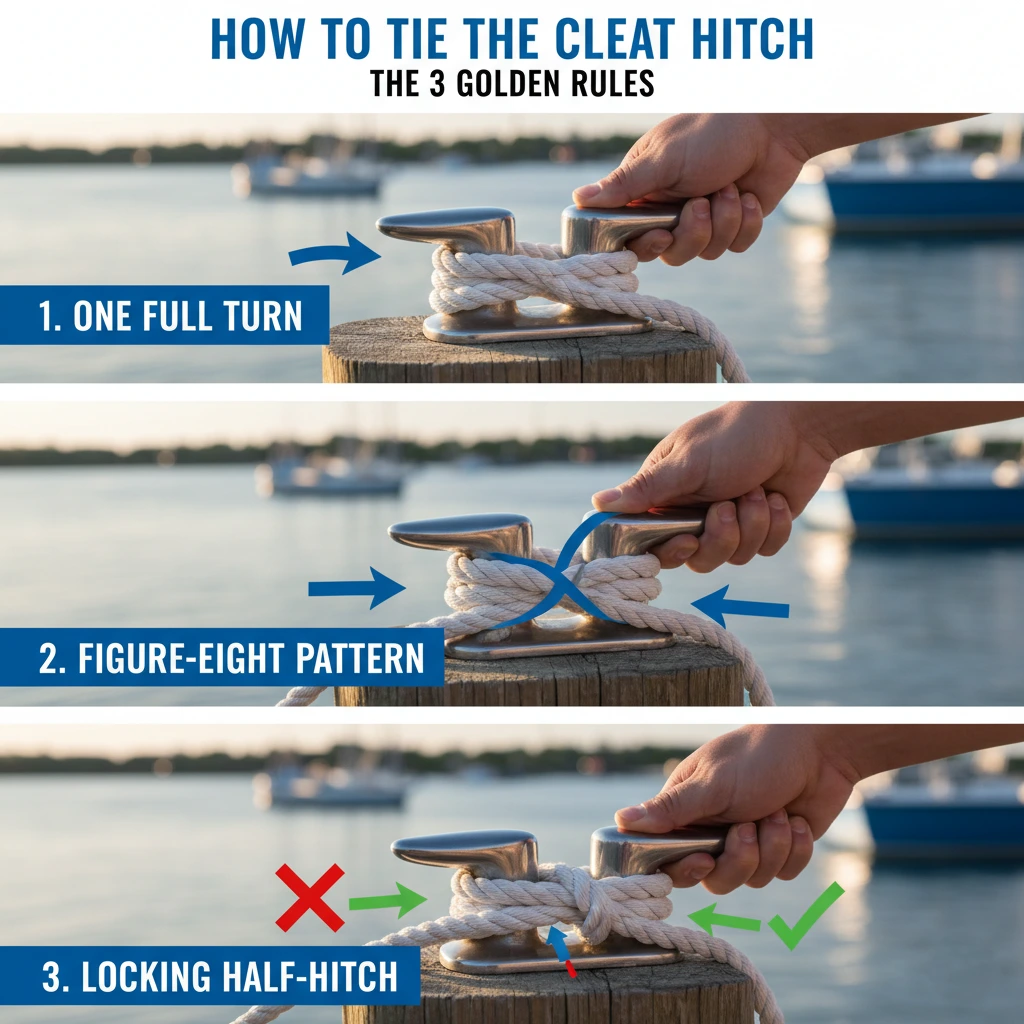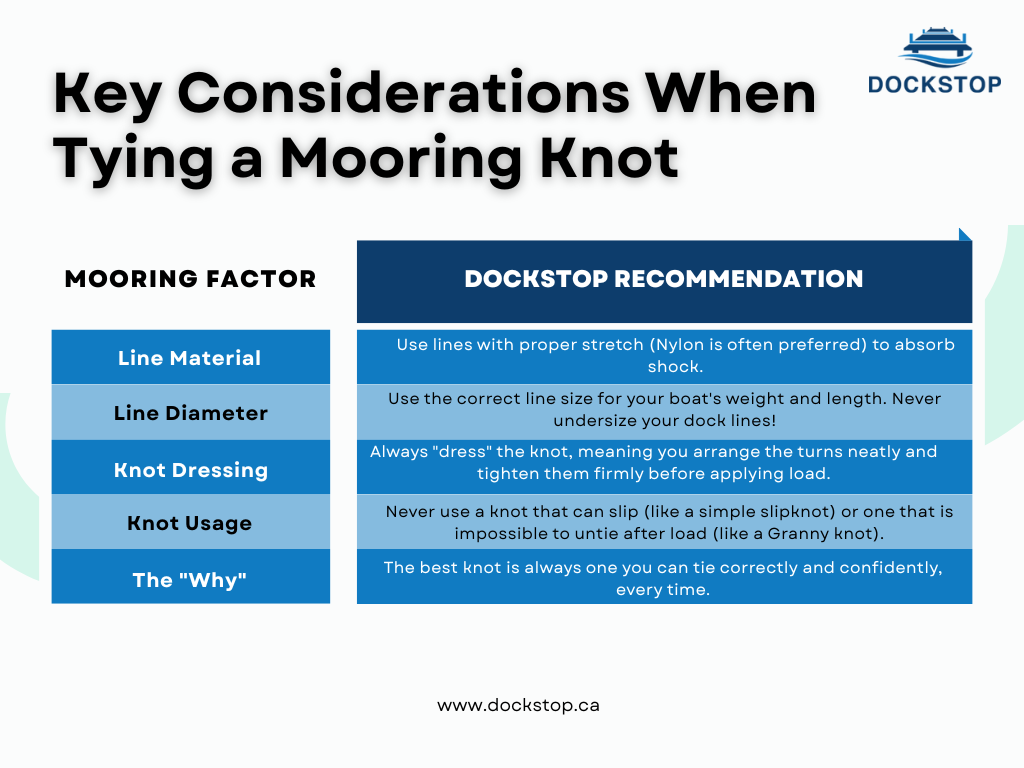What is the Best Knot for Mooring a Boat? The DockStop Guide to Secure Docking
A secure mooring knot is the first and most critical step in protecting your boat and dock investment. A knot that slips, jams, or fails can lead to catastrophic damage in high winds or rough waters.
Knowing what is the best knot for mooring a boat is an essential part of safe and effective boating.
The truth is, there isn’t just one “best” knot, but rather a perfect knot for every situation. You need a mix of strength, security, and the ability to untie it easily—even after a heavy load.
Here is your DockStop guide to the essential dock line knots every boat owner must know.
This guide explains the knots most commonly used in marine environments and highlights which one is considered the most reliable for everyday mooring situations.
The Cleat Hitch: The Standard Mooring Knot
The Cleat Hitch is widely regarded as the best knot for mooring a boat. It is the standard method used at docks, marinas, and waterfronts because it provides a secure hold while remaining easy to tie and untie—even after being placed under significant load.
Why the Cleat Hitch Is Preferred:
-
It offers strong, consistent holding power.
-
It prevents line slippage on dock cleats.
-
It can be released quickly when needed.
-
It works well with most dock systems, including aluminum docks, floating docks, and modular systems.
How to Tie a Cleat Hitch
-
Wrap the rope once around the base of the cleat.
-
Cross the rope over the top of the cleat.
-
Make a figure-eight pattern by looping around each horn.
-
Finish with a half-hitch under the final horn to lock the line in place.
This structure distributes tension evenly, reducing stress on both the line and the dock hardware.

Other Useful Knots for Mooring a Boat
While the Cleat Hitch is the most widely used knot for docking, other knots are helpful in situations where cleats or specific hardware are not available.
1. Bowline Knot
Creates a fixed loop that does not tighten under load. Useful for tying to rings, posts, or mooring balls.
2. Round Turn and Two Half Hitches
Provides a secure connection to poles or pilings. Works well when a boat must be tied temporarily or when additional friction is required.
3. Figure-Eight Knot
Primarily used as a stopper knot to prevent a line from slipping through fairleads or blocks.
Each of these knots has its own purpose, but none match the Cleat Hitch in convenience and reliability for typical docking situations.
Key Considerations When Tying a Mooring Knot
Knowing the knot is only half the battle. To ensure the most secure mooring possible, keep these tips in mind:

Secure Your Boat and Protect Your Dock
Understanding what is the best knot for mooring a boat is fundamental to enjoying your time on the water worry-free. A properly secured line reduces stress on your boat’s hull and protects the life of your dock structure.
Ready to upgrade your mooring setup?
Visit the DockStop marine accessories section for high-quality dock lines, snubbers, and cleats. If you need help with a dock installation or cleat repair, contact the experts at DockStop today! We’re here to ensure your boat is secure, season after season.
